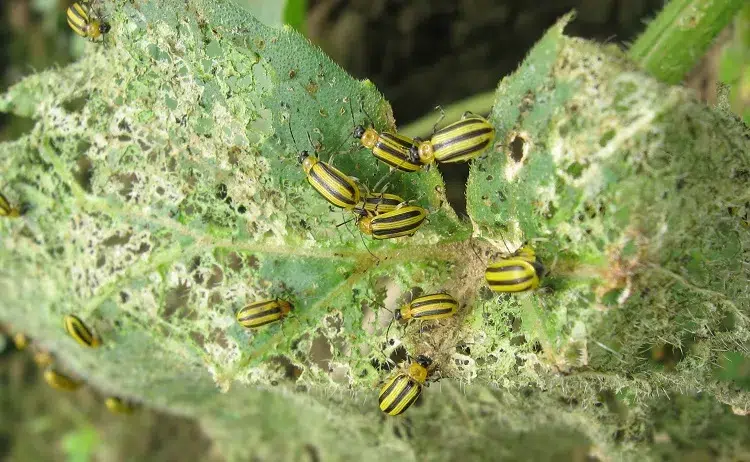There’s nothing like growing your own fruits and vegetables! Being in the height of cucumber season, you eat cold soups and fresh summer salads every day that are delicious and hydrating at the same time, right? But when you harvest the next batch, you realize that the cucumber leaves are covered with holes? Well, finding out what is eating cucumber leaves and getting rid of it as soon as possible is essential!!
What Eats Cucumber Leaves?
In fact, what eats cucumber leaves is not too difficult a riddle to solve. In most cases, it is either aphids or the striped cucumber beetle. No doubt if among the flowers and cucumber leaves that have been eaten, you also spot small critters striped or spotted with yellow and black. These beetles can also attack your zucchini, pumpkins and melons, as they will eat any member of the Cucurbitaceae family.
Is The Problem Serious? What Can You Do About It?
The devastation caused by striped cucumber beetles on the leaves can reduce yield, but the even greater problem is that they are vectors for the spread of certain fungal diseases and viruses that are capable of killing our plants. Fortunately, there are simple techniques that can prevent or limit a possible infestation, provided we react in time. Here’s how to get rid of striped cucumber beetles and minimize their damage.
What Is a Striped Cucumber Beetle?
The striped beetle that eats the leaves of your cucumbers is a small insect with yellow and black stripes measuring about 1/5 inch/0.5-0.6 cm long. Adult insects can overwinter in nearby plant debris. Both the larvae and adults consume the roots, flowers and leaves of cucumber and zucchini, among others.
How to Prevent Cucumber Leaves Being Eaten?
There are several preventative strategies to consider instead of trying to treat a problem that already exists. For example, plant beetle resistant varieties.
Practicing crop rotation and using “trap crops” that pests find more delicious than cucumbers are also good ideas when dealing with cucumber pests. Squash and zucchini are usually very attractive to striped beetles.
Also consider using floating covers over your cucumber rows throughout the pre-bloom period. Mulching, careful weeding and cleaning up plant debris are among the other preventive measures against the striped cucumber beetle that eats cucumber leaves.
How to Get Rid of Striped Cucumber Beetle?
As is always the case, it is much more difficult to stop an infestation that has started than to prevent it. In this particular case, the reason is that when the cucumber leaf-eating insect starts feeding, it releases pheromones containing volatiles, and more striped leaf beetles arrive to feast.
Of course, you shouldn’t give in, but you should always try to get rid of them or at least reduce their population. Inspect your plants regularly and crush any beetles you find there by hand or throw them in a container of soapy water. You can also make your own sticky traps using glue-coated yellow cups that look like the flowers of zucchini and cucumbers and will attract intruders, but won’t let them go.
Finally, you can make your own homemade organic insecticide using neem oil or a garlic infusion, for example. Pyrethrum may otherwise be effective, but it must come into contact with the beetles to affect them, as it does not leave a residue on the leaves. True, it is the striped leaf beetle that eats cucumber leaves, but this insect has its own natural predators. So invite ground beetles into the garden, and don’t use pyrethrum if you notice pollinators and other beneficial insects working their magic in the yard.





